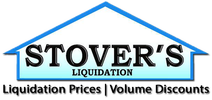Maintaining Resilient Commercial Flooring
Whether it is car engine or a flooring product, they’re going to last longer if they are installed and maintained properly. Hopefully, we don’t buy a $30,000.00 car and not perform any maintenance on it. Facilities using a no maintenance program are shortening the life cycle of the flooring product by not properly protecting it. Lack of regular or routine maintenance will diminish the look and appearance of the flooring. Most commercial flooring products today have a durable UV cured urethane wearlayer on them for protective measures. However, the thickness of these durable UV cured urethane wearlayer is about 1/1000th of an inch or less. Floor maintenance systems are most often a necessary and desirable element of good floor maintenance. They provide a cleanable and renewable slip resistant walking surface as well as abrasion resistance for many types of floors that would be destroyed in a relatively short period of time. There are low maintenance flooring products on the market that do not require waxes or finishes, but they do require regular maintenance and burnishing to maintain the look and performance of the flooring product.
85% of all soil that enters a building comes in through its entrances. Most of that soil can be prevented from entering a building through the use of a good walk off mat system. The use of walkoff mats will mean less money spent on recoating or replacing floors worn from soil abrasion and less money spent on removing soil from the facility. Controlling grit and soil is crucial to prolonging the attractive appearance and performance of any floor. Walk-off mats should:
- Have a high-friction, open surface design to catch grit particles from the shoes and then trap the particles.
- Be used at every entrance, inside and outside, and should be at least as wide as the doorway and 8´ to 12´ long. More steps on the walk off mats, the cleaner the shoe.
- Have a backing that won’t stain the floor.
- Be cleaned and vacuumed regularly, and shaken and/or hosed off frequently.
Things to Consider:
Color and pattern of the flooring as it can have a significant impact on a floors appearance. When properly chosen, this may help mask soiling and staining. Mid-tones are better choices than light or dark colors. Lighter colors show dirt and darker colors show scratching and wear. Busier, high contrast patterns will hide soiling and staining better than solid, monolithic floors.
Entryways, lobbies and pivot-point areas may require more protection and more frequent cleaning than lower traffic areas in other parts or upper levels of a building.
Types of Maintenance Systems:
Floor Polishes today are a high-quality, water-based acrylic polishes for protecting and enhancing commercial resilient floors. 2 average coats of a floor polish provide a protective barrier that is roughly the equivalent in film thickness to the thickness of one human hair. Polish also make floors easier to clean, make buildings more attractive, and reduce the amount of electricity necessary to light an area. How shiny the floor may appear, how many coats may have been applied to the floor, by what means or how skillfully the coating was applied to the floor, or whether the floor is buffed or burnished has no bearing on floor safety. Polishing a floor will protect the floor from damaging abrasive wear, soiling and staining from traffic, and allows the floor to be cleaned easier.
Spray-Buffing is the process of applying and buffing the floor with a specially formulated spray buffing solution. This procedure is especially useful in high traffic areas. The solution is sprayed on the floor and then immediately buffed with a machine until dry. This process levels and fills scratches and reduces the need for stripping while enhancing the floor’s gloss level. Depending on the finish and the floor, spray buffing is performed at machine speeds of 175 to 1000 rpm.
Dry-Buffing/Burnishing is the process of buffing/burnishing a clean, dry flooring surface with a machine. Dry-buffing will restore or increase gloss; however, care must be taken to avoid damaging the surface. Conventional dry-buffing is typically done at 175-1500 rpm. Ultra High Speed (UHS) burnishing is a similar process with typical machine speeds of 2000 rpm.
Coarseness of the pad determines its use: least coarse for buffing, with increasing coarseness for scrubbing and stripping. Pads are color-coded to designate their coarseness and use. Lighter colored pads tend to be less abrasive, with darker colored pads being the most abrasive. Pad manufacturers generally follow these guidelines:
- Natural fiber – burnishing
- Aqua – burnishing
- Pink – burnishing
- White – polishing
- Beige – buffing
- Red – spray-buffing and light scrubbing
- Blue/Green (medium abrasive) – scrubbing and stripping
- Brown (extremely abrasive) – not recommended for resilient flooring
- Black (extremely abrasive) – not recommended for resilient flooring
For the specific manufacturers recommended care and maintenance, I have attached the following links;
http://www.armstrong.com/assets/commflooringna/literature/downloads/F8663.pdf
http://www.flexcofloors.com/technicalsupport/index.html
http://www.roppe.com/technical/index.html#
Special Thanks JJ Haines for the information
